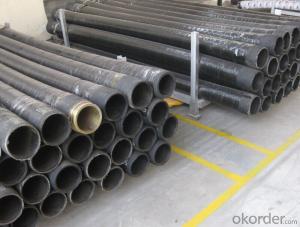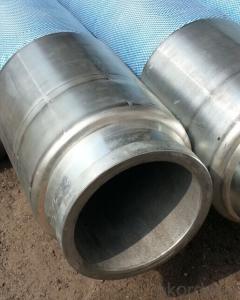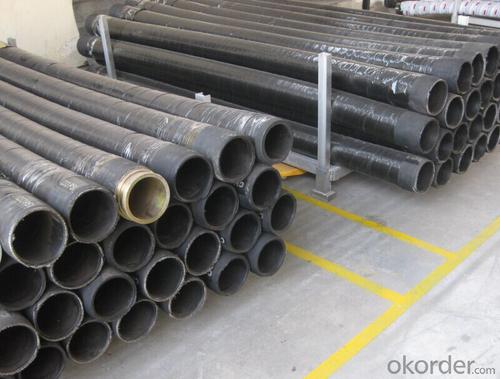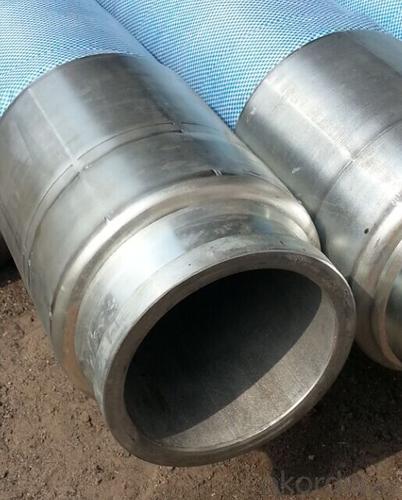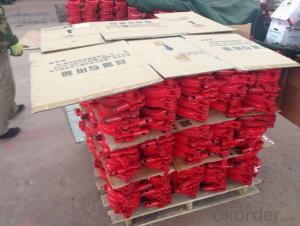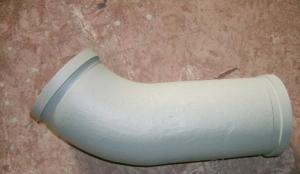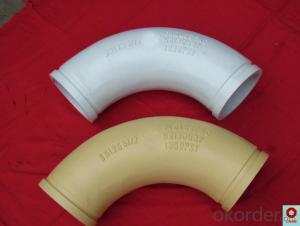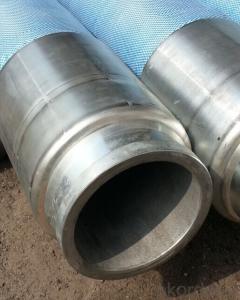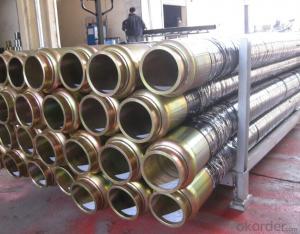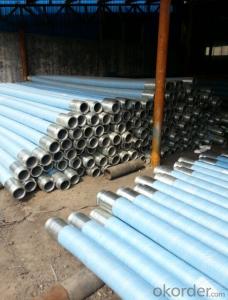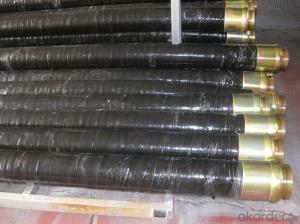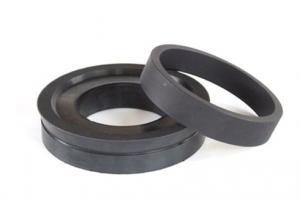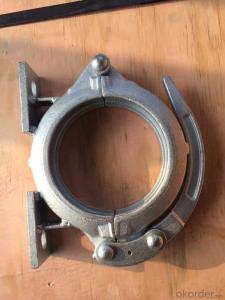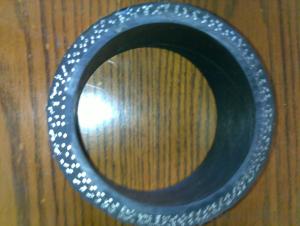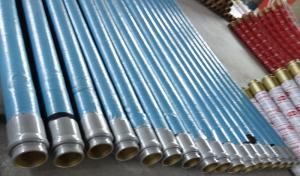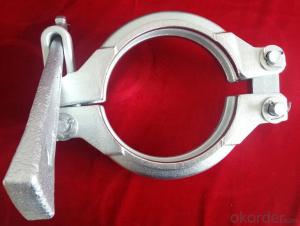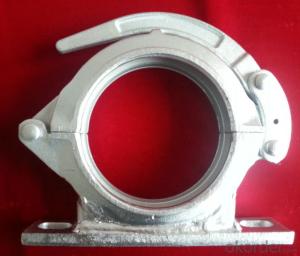3M*DN150 RUBBER END HOSE WITH ONE SIDE COUPLINGS WORKING PRESSURE 85 BAR
- Loading Port:
- Shanghai
- Payment Terms:
- TT OR LC
- Min Order Qty:
- 10 pc
- Supply Capability:
- 5000 pc/month
OKorder Service Pledge
OKorder Financial Service
You Might Also Like
Specifications
Putzmeister concrete pump end rubber hose
1. Size: DN150, DN125, DN100, DN80...
2. Length: 1~9m
Concrete pump end rubber hose PM &Schwing
Name | Specifications | Application | Flange diameter | Remarks |
Rubber hose | DN125*3000 | Concrete pump | 148/DN157mm | |
Rubber hose | DN150*3000 | Concrete pump | 148/DN157mm | |
High pressure | DN125*3000 | Concrete pump | 148/DN157mm | Two layers of steel wire |
High pressure | DN125*3000 | Concrete pump | 148/DN157mm | Four layers of steel wire |
High pressure | DN125*4000 | Concrete pump | 148/DN157mm | |
High pressure | DN150*3000 | Concrete pump | 175mm | |
| DN80*5000 | Mortar pump mini conctete pump | 98mm | |
| DN80*6000 | Mortar pump mini conctete pump | 98mm | |
| DN100*5000 | Mortar pump mini conctete pump | 124mm | |
| DN76*6000 | Fine stone concrete pump mini conctete pump |
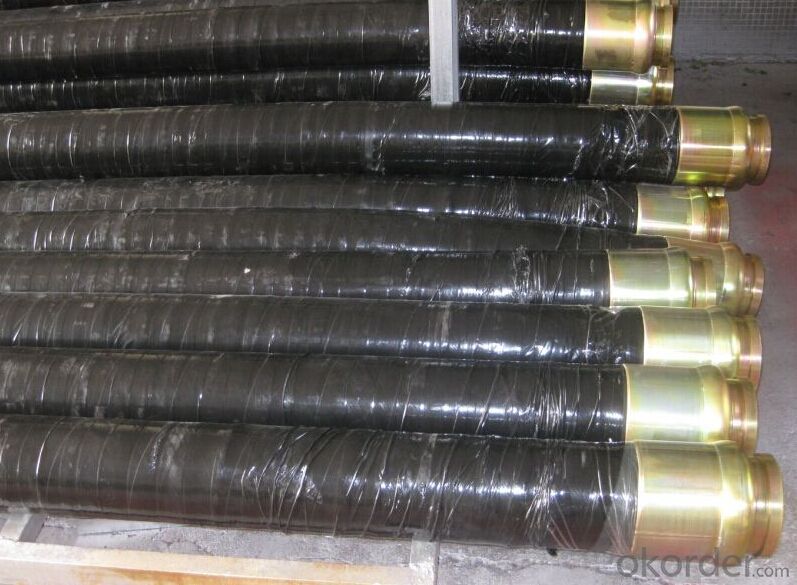
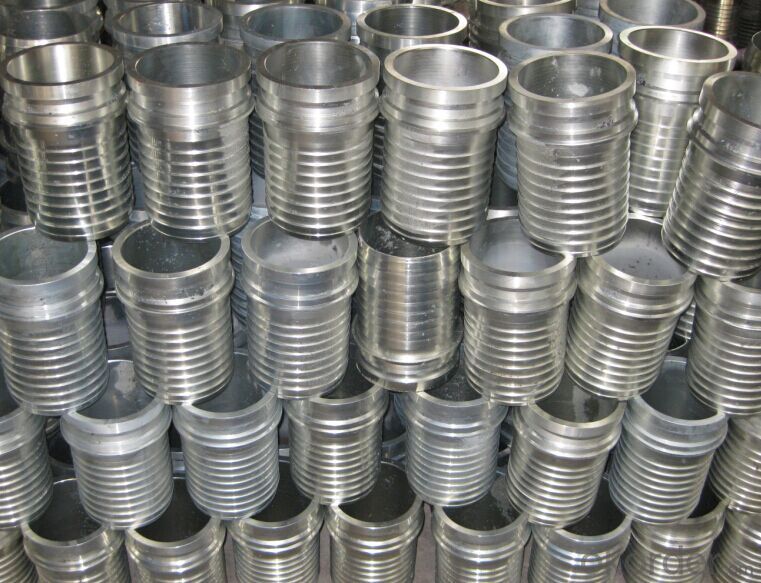
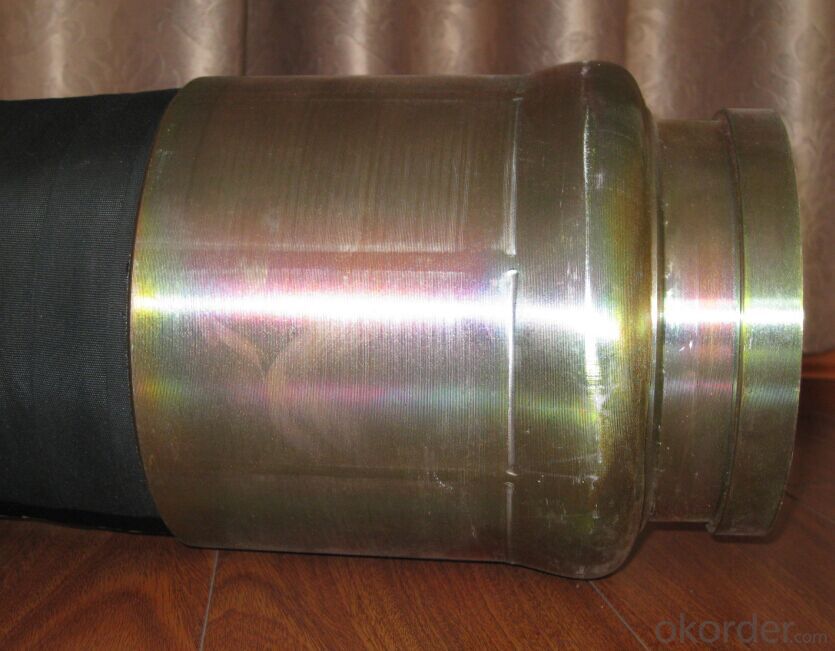
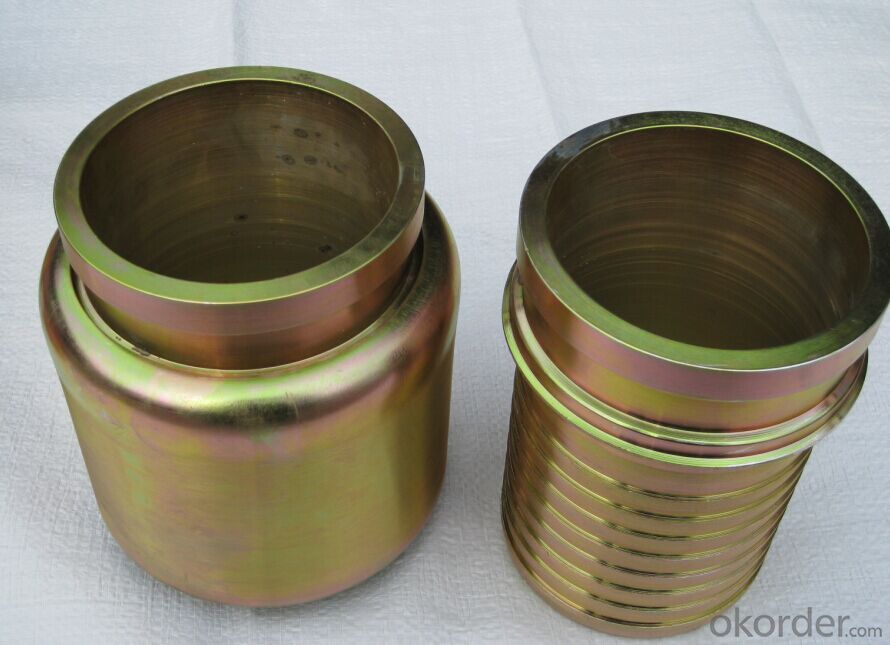
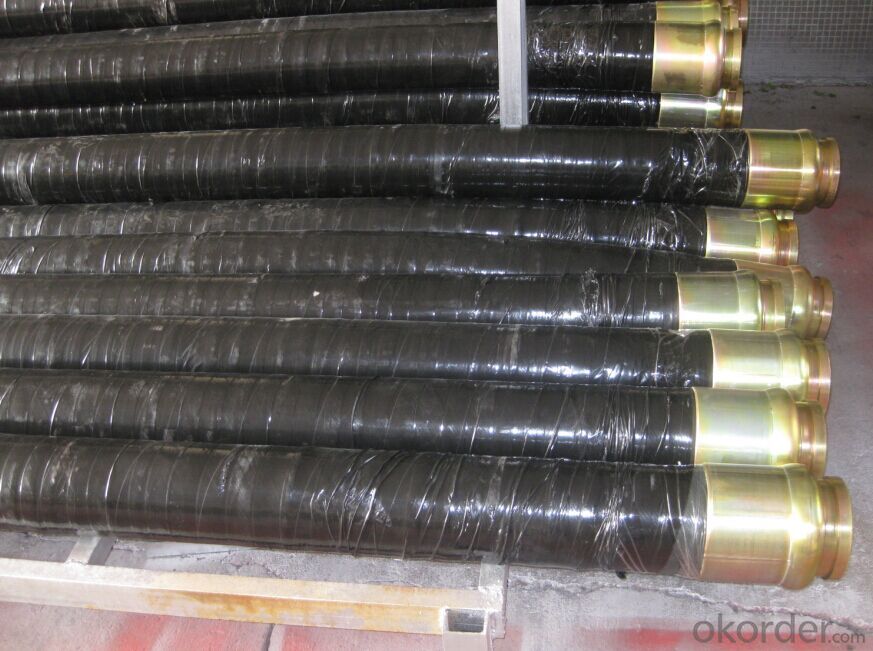
- Q: Are there any specific guidelines for the disposal of old or damaged concrete pump spare parts?
- Old or damaged concrete pump spare parts must be disposed of according to specific guidelines. To ensure environmental sustainability and comply with local regulations, it is important to dispose of these parts properly. Here are some steps to follow: 1. Hazardous material identification: Prior to disposal, it is crucial to determine if the spare parts contain any hazardous materials such as oils, lubricants, or chemicals. These substances require special handling and cannot be disposed of in regular waste streams. 2. Separation of recyclable materials: If the spare parts are made of recyclable materials like metal or plastic, it is advisable to separate them from other waste. Recycling these materials helps conserve resources and reduces the strain on landfill sites. 3. Contact waste management authorities: Each region has its own guidelines and regulations for disposing of specific materials. It is recommended to reach out to local waste management authorities to understand the proper procedures for disposing of concrete pump spare parts in your area. 4. Arrange for proper disposal: Once hazardous materials have been identified and recyclable parts have been separated, make arrangements for their proper disposal. This may involve contacting specialized waste management companies that handle hazardous materials or taking them to designated recycling centers. 5. Avoid illegal dumping: It is essential to refrain from illegally dumping old or damaged concrete pump spare parts. This can harm the environment and may result in fines or penalties. Always dispose of these parts through legal and responsible channels. By adhering to these guidelines, you can ensure the appropriate disposal of old or damaged concrete pump spare parts, minimize environmental impact, and comply with local regulations.
- Q: How can one differentiate between genuine and counterfeit concrete pump spare parts?
- To differentiate between genuine and counterfeit concrete pump spare parts, one should consider several factors. Firstly, it is crucial to purchase spare parts from authorized and reputable dealers or manufacturers. Genuine parts are typically sold through official channels, ensuring their authenticity and quality. Secondly, one should carefully inspect the packaging and labeling of the spare parts. Genuine parts often have clear branding, product numbers, and proper packaging, while counterfeit parts may have inconsistent labeling or poor quality packaging. Additionally, examining the quality and durability of the spare parts is essential. Genuine parts are manufactured to meet strict standards and are more likely to be durable and reliable. Lastly, seeking professional advice or consulting with experts in the industry can provide valuable insights into identifying genuine concrete pump spare parts.
- Q: What is the function of a concrete pump hydraulic filter?
- The function of a concrete pump hydraulic filter is to remove contaminants and impurities from the hydraulic fluid that is responsible for operating the pump. The hydraulic filter is designed to capture particles such as dirt, debris, and metal fragments that may be present in the hydraulic system. By removing these contaminants, the filter ensures that the hydraulic fluid remains clean and free from any potential damage-causing particles. This helps to maintain the overall performance and longevity of the concrete pump by preventing clogs, wear and tear, and potential damage to the pump's hydraulic components. Additionally, a clean hydraulic system reduces the risk of hydraulic fluid leakage, which can lead to costly repairs and downtime. Therefore, the concrete pump hydraulic filter plays a critical role in ensuring the efficiency, reliability, and durability of the pump's hydraulic system.
- Q: What is the role of a concrete pump cylinder in a pumping system?
- The role of a concrete pump cylinder in a pumping system is to generate the necessary hydraulic pressure to push the concrete through the pipeline. The cylinder works by converting the mechanical energy from the pump into hydraulic energy, allowing for efficient and controlled movement of the concrete.
- Q: What is the purpose of a concrete pump agitator motor?
- The purpose of a concrete pump agitator motor is to mix and agitate the concrete mixture inside the pump, ensuring a consistent and homogenous blend. This helps to prevent the concrete from settling or segregating, ensuring a higher quality and more workable mixture for construction purposes.
- Q: How often should wear rings be replaced in a concrete pump?
- The frequency at which wear rings should be replaced in a concrete pump depends on several factors including the type of pump, the quality of the wear rings, the volume of concrete being pumped, and the operating conditions. In general, wear rings are components that experience significant wear and tear due to the abrasive nature of concrete. As a result, they will eventually need to be replaced to maintain the pump's efficiency and prevent potential damage to other parts of the pump. Typically, wear rings should be inspected regularly during routine maintenance checks. The wear patterns and extent of damage will determine whether replacement is necessary. In some cases, wear rings may last for several thousand hours of operation, while in others, replacement may be required more frequently. It is recommended to consult the pump manufacturer for specific guidelines on wear ring replacement intervals based on the pump model and operating conditions. They may provide recommendations based on their expertise and knowledge of the pump's design and performance. Ultimately, the goal is to ensure that the concrete pump operates smoothly and efficiently, minimizing downtime and maximizing its lifespan. Regular inspections and proactive replacement of wear rings when necessary will help achieve this objective.
- Q: How can a faulty concrete pump S valve affect the concrete flow?
- A faulty concrete pump S valve can affect the concrete flow by causing disruptions, blockages, or uneven distribution of the concrete. The S valve is responsible for controlling the direction of the concrete flow, and when it malfunctions, it can lead to decreased or inconsistent flow rates. This can result in delays in the construction process, poor concrete quality, or even damage to the pump system.
- Q: How can one determine the correct size and dimensions of concrete pump spare parts?
- To determine the correct size and dimensions of concrete pump spare parts, there are several important steps to follow: 1. Identify the specific make and model of your concrete pump: Each concrete pump has its own unique specifications and requirements for spare parts. Therefore, it is crucial to know the make and model of your pump before ordering any spare parts. 2. Consult the manufacturer's documentation: Manufacturers often provide detailed documentation that includes information on the required size and dimensions of spare parts. This documentation may include technical drawings, diagrams, and part numbers that can help you find the correct size. 3. Measure the existing spare part: If you already have a spare part that needs replacement, you can measure its size and dimensions using precision tools like calipers or a measuring tape. Take accurate measurements of key dimensions such as length, width, height, and any other relevant specifications. 4. Seek professional assistance: If you are unsure about the correct size and dimensions, it is advisable to consult with a professional or an authorized dealer. They have expertise in concrete pumps and can guide you in selecting the right spare parts based on your pump's specifications. 5. Consider compatibility and quality: When purchasing spare parts, ensure they are compatible with your concrete pump's make and model. Additionally, prioritize quality to ensure longevity and optimal performance. Buying from reputable suppliers or directly from the manufacturer can help ensure the spare parts meet the necessary size, dimensions, and quality standards. By following these steps, you can accurately determine the correct size and dimensions of concrete pump spare parts, ensuring smooth operation and minimizing downtime.
- Q: What are some common issues with concrete pump hoses and how can they be prevented?
- Concrete pump hoses can encounter various problems such as blockages, leaks, and premature wear. To avoid these issues, it is essential to adhere to proper maintenance and usage practices. 1. Blockages: Blockages can occur when concrete or debris hardens inside the hoses. Thoroughly cleaning the hoses after each use is crucial to prevent blockages. Flushing the hoses with water or using a cleaning sponge ball effectively removes any residue or build-up. Additionally, using the correct size and length of hose for the job reduces the risk of blockages. 2. Leaks: Leaks may result from wear and tear, improper connections, or hose damage. Regularly inspecting the hoses is vital to detect any signs of leakage. Any leaks detected should be promptly repaired or replaced. Properly connecting and securing the hose fittings also helps prevent leaks. 3. Premature Wear: Over time, concrete pump hoses can wear out due to factors such as abrasion, bending, and exposure to harsh chemicals. Handling the hoses with care and avoiding dragging them on rough surfaces is important to prevent premature wear. Using protective sleeves or guards provides additional protection against abrasion. Regularly inspecting the hoses for signs of wear and replacing them when necessary is essential. 4. Storage Practices: Improper storage of concrete pump hoses can cause damage and reduce their lifespan. Storing the hoses in a clean and dry environment away from direct sunlight and extreme temperatures is recommended. Properly coiling the hoses and avoiding sharp bends or kinks helps maintain their integrity. 5. Pressure Management: Exceeding the recommended pressure limits can result in hose bursts or failures. Ensuring that the concrete pump operates within the specified pressure range is crucial. Regularly inspecting the pressure gauges and monitoring the pumping process aids in preventing over-pressurization. By adhering to these preventive measures, conducting regular inspections, and performing necessary maintenance, the common issues associated with concrete pump hoses can be minimized. This, in turn, leads to improved performance and increased longevity of the hoses.
- Q: How often should agitator shaft seals be replaced in a concrete pump?
- Several factors influence the frequency of agitator shaft seal replacement in a concrete pump. These factors include the type and quality of the seal, the pump's operational conditions, and the user's maintenance practices. However, as a general rule, it is advisable to inspect and replace agitator shaft seals every 500 to 1,000 operating hours or annually, whichever comes first. Regular inspection of the seals is essential. This is to detect any signs of wear, leakage, or damage. If any of these issues are found, immediate seal replacement is necessary. This is to prevent further damage to the pump and ensure optimal performance. It is also important to adhere to the manufacturer's instructions and recommendations for seal replacement. These instructions may be specific to the pump model and seal type. Proper maintenance practices, such as regular cleaning and lubrication of the seals, can help prolong their lifespan. This can also reduce the need for frequent replacements. It is important to remember that failure to replace worn or damaged agitator shaft seals in a timely manner can result in increased downtime, decreased efficiency, and potential damage to other pump components. Therefore, regular inspection and replacement of agitator shaft seals should be prioritized to ensure the smooth operation and longevity of the concrete pump.
Send your message to us
3M*DN150 RUBBER END HOSE WITH ONE SIDE COUPLINGS WORKING PRESSURE 85 BAR
- Loading Port:
- Shanghai
- Payment Terms:
- TT OR LC
- Min Order Qty:
- 10 pc
- Supply Capability:
- 5000 pc/month
OKorder Service Pledge
OKorder Financial Service
Similar products
Hot products
Hot Searches
Related keywords
